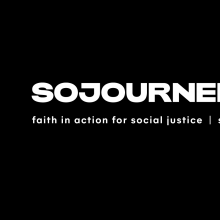equal pay
IN THE SUMMER OF 2019, I fulfilled one of my childhood dreams: I cheered from the stands as the U.S. Women’s National Team won the FIFA Women’s World Cup in France.
This summer, I’ll be traveling to New Zealand and Australia to watch the team compete to win a third straight World Cup, a feat never before accomplished. I loved every moment of the 2019 tournament — the clutch penalty kicks and the cheeky goal celebrations — but two of my favorite moments came right after the final whistle blew.
The crowd of 57,900, which had been loud the whole game, got even louder.
The first chant was an easy and obvious way to cheer on the new champs: “USA! USA! USA!” I said it a couple times, but not with much gusto. It felt weird. If I said those letters, I wondered, what exactly was I cheering on? Just the team? Or also the U.S. president (at the time, Donald Trump) and his administration’s policies?
Fortunately, the chant shifted to one I could get behind wholeheartedly. As FIFA president Gianni Infantino, head of the international soccer governing body, walked to center field to begin the trophy ceremony, people around me started chanting: “EQUAL PAY! EQUAL PAY! EQUAL PAY!” Drummers behind the goal line punctuated the sound. Within seconds, the whole stadium had joined in.
At the time, a top-performing player on the U.S. Women’s National Team (USWNT) earned only 38 percent of what was earned by a top-performing player on the U.S. Men’s National Team. But as of 2022, the USWNT signed a collective bargaining agreement with the U.S. Soccer Federation that ensures that the national women’s team will be paid at the same rate for game appearances and tournament victories as the men. With this agreement, the U.S. team is setting a powerful global example.
How the “welfare state” is designed to subsidize affluence rather than fight poverty.
Just under a hundred days before their first World Cup match (in which they would score a record-breaking 13 goals), every member of the team filed a class action, gender discrimination lawsuit against the U.S. Soccer Federation. The timing of the announcement conveyed that the 23 other teams in the tournament would not be the only opponents of the USWNT this World Cup.
The first element that gets blown up by the parable is the motive of the landowner. Sometimes preachers, trying to fill in the gaps in the story, will surmise something like, “So the landowner, needing more laborers to work the vineyard, went back to the marketplace,” but this distorts the parable.

Image via Pitzer College/Flickr
In 1993, Huerta became the first Latina inducted into the National Women’s Hall of Fame. And in January, a documentary about her work, aptly titled Dolores, premiered at Sundance.
African-American Women's Equal Pay Day: Graphic Highlights Pay Gap Between Black Women and White Men

Image via Michele Paccione/Shutterstock
African-American Women’s Equal Pay Day annually highlights the discrepancies between the pay rate of white men and black women of various educational backgrounds. On Aug. 23, to draw attention to this divide, the hashtag #BlackWomensEqualPay began trending on social media.
Earlier this week, feminist Gloria Steinem said that religion is the “biggest problem” facing feminism today.
Steinem made this assertion in response to a town-hall style question she was asked during an interview with Jennifer Aniston at the MAKERS Conference. The MAKERS Conference was born of the PBS documentary, “MAKERS: Women Who Make America,” and was held to develop an “action plan to define the agenda for women in the 21st century.”
Steinem was asked, “What do you think the biggest problem with feminism today is?” to which she replied, “What we don’t talk about enough is religion. I think that spirituality is one thing. But religion is just politics in the sky. I think we really have to talk about it. Because it gains power from silence.”





